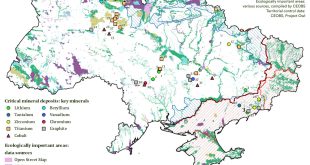Key Points
- Azerbaijan’s energy transition is driven by several factors, including the country’s growing economy, increasing energy demand, and concerns about climate change.
- Azerbaijan has plentiful fossil fuel supplies used for export, but as there is a global move toward obtaining zero net greenhouse gas emissions, the country will need to find new options.
- Green transportation is a significant source of carbon emissions in Azerbaijan, so eco-friendly transit options such as biofuel and electric vehicles are being promoted alongside enhanced public transit systems.
- The country needs to address its challenges and adopt a holistic approach to its energy transition, considering technical, economic, social, and environmental factors.
Azerbaijan’s energy transition is driven by several factors, including the country’s growing economy, increasing energy demand, and concerns about climate change. The country’s focus on sustainable solutions is also evident in its foreign policy agenda, which includes promoting green energy and reducing greenhouse gas emissions. With a population of approximately 10 million and making only a tiny contribution to worldwide greenhouse gas emissions, Azerbaijan has rapidly developed and modernized its energy infrastructure.
In 2019, the country’s CO2 output was 6.2 t per capita, not considering forestry activities and land use. With these factors considered, the figure shifts to 5.4 t per capita. Energy is the country’s biggest source of greenhouse gases (75 percent), with agriculture also playing a significant role (14 percent). Azerbaijan has plentiful fossil fuel supplies used for export, but as there is a global move toward obtaining zero net greenhouse gas emissions, the country will need to find new options.
The country plans to cut GHG emissions by 40 percent before 2050 and aims to develop a voluntary region of net zero emissions in its liberated territories. At the start of February 2021, the “Azerbaijan 2030: National Priorities for Socio-economic Development” was adopted. The fifth priority of this document is “green growth” and a healthy environment. Thus, Azerbaijan has improved cooperation on environmental and climate-related issues. Azerbaijan is progressing along its sustainable energy route thanks to EU backing, international financing, and support via the EU4Engery program.
A World Bank report makes clear the need for energy sector change. Firstly, regulatory bodies must be improved, the private-sector investment must be encouraged, and renewables should be prioritized. Through these tools, efficiency can be improved, and environmental impacts can be mitigated. Additionally, the report suggests using incentives such as net metering and feed-in tariffs to drive investment in renewables. Alongside this, the report suggests rolling out training and education to support the development of sustainability in the energy industry.
On an international scale, knowledge exchange and technical assistance should be sought from overseas agencies, and financing for renewables projects and energy efficiency measures should be sought from global funding agencies such as the Global Environment Facility and Green Climate Fund. To help its move to sustainability, Azerbaijan is relying more on renewables such as solar and wind power. Thanks to its geographical positioning, the nation is well-placed to develop such energy resources. Baku has set a goal to move from 17 percent to 30 percent of total energy from renewable sources by 2030.
Energy infrastructure is developing quickly in Azerbaijan, which is having knock-on effects on the country’s energy transition. Baku has been keen to invest significantly in its infrastructure to improve old facilities and develop solar and wind energy farms. This will reduce the nation’s dependence on imported energy and ensure a reliable and sustainable energy supply. Green transportation is a significant source of carbon emissions in Azerbaijan, so eco-friendly transit options such as biofuel and electric vehicles are being promoted alongside enhanced public transit systems.
Commitment to Reducing Emissions
Azerbaijan is committed to decreasing its emissions. It has signed the Paris Accords and is part of the UN Framework Convention on Climate Change. While not an easy task, Baku has also laid out plans to cut its GHG emissions by 35 percent before 2035, relative to 1990 levels. One of the key initiatives taken by Azerbaijan toward this end is implementing a national strategy for renewable energy development.
In 2019, the government adopted a renewable energy action plan to increase the share of renewable energy sources in the country’s electricity mix to 30 percent by 2030. Azerbaijan has invested in various renewable energy projects to achieve this target, including solar, wind, and biomass. Azerbaijan has also improved energy efficiency in various sectors, including buildings and transportation. The government has introduced energy efficiency standards for buildings and is promoting using electric and hybrid vehicles. Azerbaijan’s renewable energy potential is considerable, with an estimated potential for over 25 GW of solar and wind energy.
The government has actively sought foreign investment in the renewable energy sector and has introduced various incentives, including tax breaks and streamlined regulatory processes. The government has also been investing in research and development of new technologies, such as energy storage, to ensure the efficient integration of renewable energy sources into the national grid. Azerbaijan is also exploring the potential of using hydrogen as a clean energy source, with plans underway to develop a hydrogen production plant. Another area where Azerbaijan is making progress is in improving energy efficiency.
Challenges
One of the biggest challenges in Azerbaijan’s energy transition is the high cost of renewable energy technologies compared to traditional fossil fuels. Despite the government’s efforts to attract foreign investment and provide incentives, the cost of renewable energy projects remains relatively high. Another challenge is the lack of infrastructure and institutional capacity to support the integration of renewable energy sources into the national grid. Azerbaijan needs to invest in grid modernization and energy storage solutions to ensure the efficient integration of renewable energy into the grid.
The country also faces technical challenges in developing renewable energy sources, particularly wind energy. Despite these challenges, Azerbaijan’s energy transition and commitment to reducing its carbon footprint present significant opportunities, including attracting investment in renewable energy, reducing greenhouse gas emissions, and improving energy security. Addressing these challenges will require a holistic approach that balances economic, social, and environmental considerations.
Azerbaijan’s energy transition and commitment to reducing its carbon footprint offer significant opportunities for the country to achieve energy security and contribute to global efforts to combat climate change. However, the country needs to address its challenges and adopt a holistic approach to its energy transition, considering technical, economic, social, and environmental factors.
Azerbaijan’s energy transition is a complex and multifaceted process that holds great promise for the future. Azerbaijan can help create a cleaner, healthier planet for future generations by embracing new technologies and working toward a more sustainable energy future.





